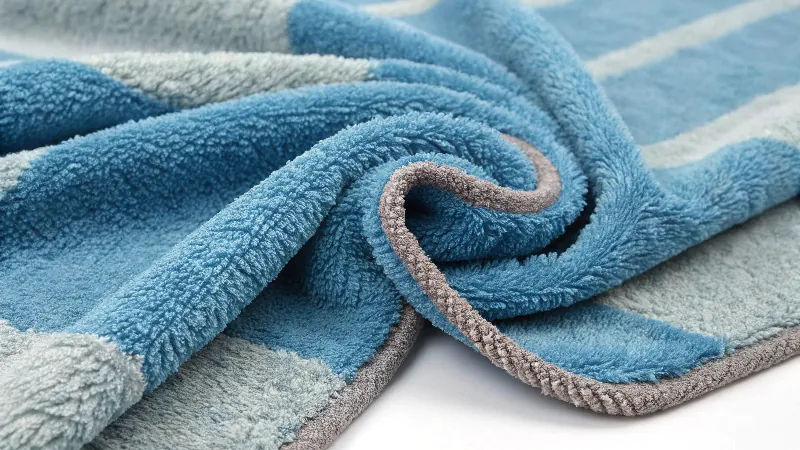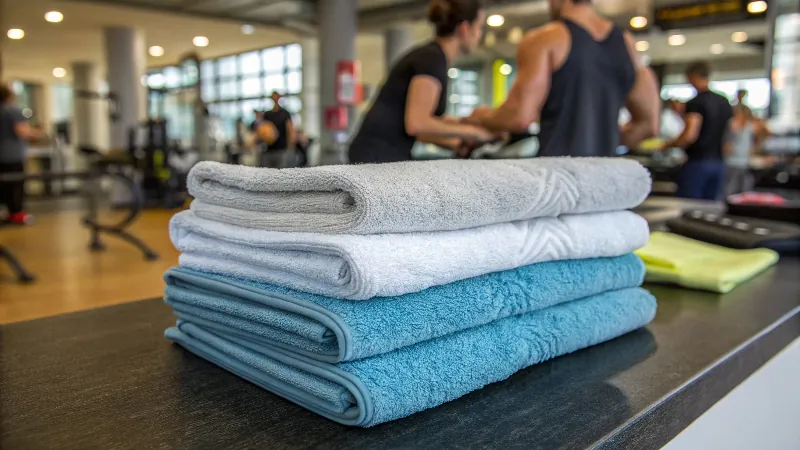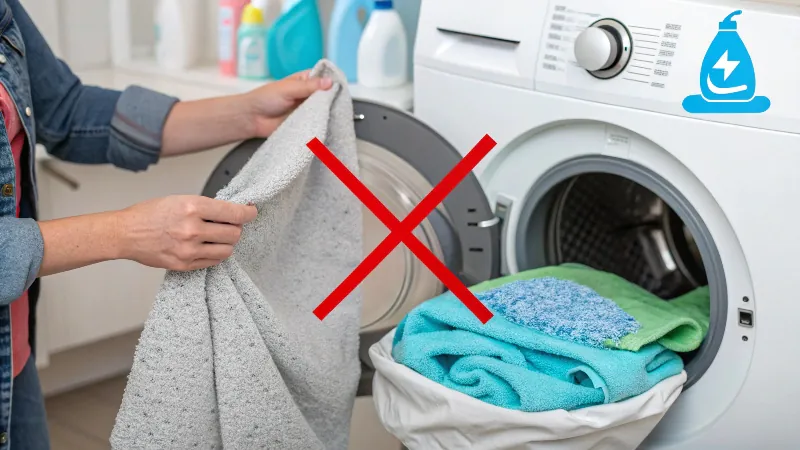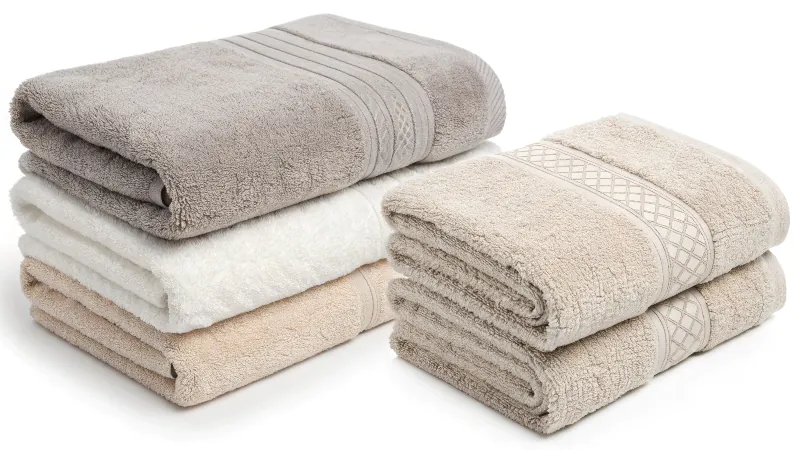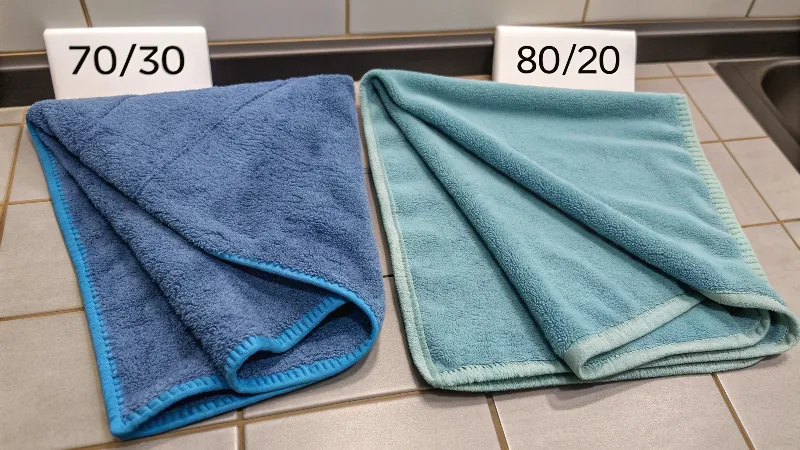Choosing the right material for your hand towels feels overwhelming. A bad choice can lead to poor performance and unhappy customers. Let’s break down microfiber to see if it’s right.
A microfiber hand towel is a synthetic towel made from a blend of polyester and polyamide. These fibers are split to create a massive surface area, making them incredibly absorbent, quick-drying, and effective at trapping dirt. It is a popular choice for performance-focused applications.
I get asked about microfiber all the time. People wonder if it’s the perfect towel material they’ve been searching for. The truth is a bit more complicated. It’s an amazing choice for certain jobs, but it isn’t the best for every situation. To make a smart decision for your brand, you need to understand both its strengths and its weaknesses. Let’s dive deeper so you can choose with confidence.
Is microfiber good for hand towels?
Are you worried that your hand towels won’t absorb well or will stay damp for too long? This can lead to musty smells and customer complaints. Microfiber’s unique structure solves these problems.
Yes, microfiber is excellent for hand towels, especially in busy settings. Its superior absorbency and fast-drying properties keep it fresh and ready for use. It is also lightweight and very durable, making it perfect for gyms, kitchens, salons, and workshops where performance is the top priority.
When I work with clients, the conversation always comes back to performance. A towel has to do its job well. This is where microfiber really shines. I remember a client who owned a chain of fitness studios. They were using standard cotton towels, and their main complaint was the laundry bottleneck. The towels took forever to dry, and they had a faint musty smell by the end of the day.
Why It Works So Well
The magic is in the material itself. Microfiber is typically a blend of polyester and polyamide. The polyester gives it strength and scrubbing ability, while the polyamide is the absorbent part. The fibers are incredibly fine—much finer than a human hair—and they are split during manufacturing. This process creates a net-like surface that is perfect for grabbing and holding water molecules. A microfiber towel can hold up to seven times its weight in water, which is far more than a cotton towel of the same size.
Where It’s Used Best
Because it dries so quickly, microfiber is the perfect choice for any high-traffic environment. For that fitness studio client, switching to microfiber hand towels was a game-changer. Their laundry turnaround time was cut in half, and the towels stayed fresh all day. We see the same success with clients in the salon industry, for kitchen use, and even for car detailing businesses where quick, streak-free drying is essential. It’s a true performance material.
What are the disadvantages of microfiber towels?
Microfiber sounds almost perfect, but you might feel there’s a catch. Ignoring the downsides can affect your brand image and sustainability goals. Let’s talk openly about its disadvantages.
The main drawbacks of microfiber are its synthetic feel, which can feel "grippy" on the skin. It also requires special care, as fabric softeners ruin its absorbency. Most importantly, it releases microplastics when washed, posing a significant environmental concern for eco-conscious brands.
I believe in being honest about a product’s limitations. No material is perfect for everyone, and microfiber has a few key issues you need to consider before investing in it for your brand. These issues generally fall into three categories: feel, care, and environmental impact.
The Feel Factor
Some people just don’t like how microfiber feels. Because the fibers are designed to grab onto things like water and dirt, they can also feel like they are clinging or sticking to your skin. It’s not the soft, fluffy feeling many associate with a luxury towel. I once worked with a boutique hotel that tested microfiber hand towels in their public restrooms. While they loved the performance, some guest feedback mentioned the "strange texture." For a brand focused on a plush, luxurious experience, cotton is often a better fit.
Care and Maintenance
You can’t treat microfiber like cotton. Using fabric softener is a big no-no because it clogs the spaces between the fibers, destroying their absorbency. They should also be washed separately from lint-producing fabrics like cotton, as the microfiber will grab and hold onto the lint. For a business, this might mean separate laundry processes, which adds a layer of complexity.
The Environmental Impact
This is a growing concern for many of my clients. When you wash microfiber, it sheds tiny plastic fibers. These microplastics are too small to be filtered out by wastewater treatment plants and end up in our rivers and oceans. For brands that have a strong sustainability message, this is a serious problem. One solution we offer at TowelTrend is microfiber made from recycled materials, certified by the Global Recycled Standard (GRS), which helps reduce the footprint. But the issue of shedding remains.
What’s the best material for hand towels?
You find yourself stuck between cotton, microfiber, bamboo, and other materials. Choosing the wrong one results in a product that doesn’t fit your brand or meet your customers’ needs. The "best" material depends completely on its intended use.
There is no single "best" material for all hand towels. For luxurious softness and a premium feel, Turkish or Egyptian cotton is unmatched. For pure performance, quick-drying, and durability in busy environments like kitchens or gyms, microfiber is the clear winner. The best choice aligns with your brand’s specific goals.
"What’s the best?" is a question I get almost every day. My answer is always the same: "Best for what?" The right material depends entirely on the story your brand tells and the job the towel needs to do. A luxury spa has very different needs than a high-volume gym. I helped a startup client who wanted to launch a line of kitchen towels for serious home chefs. We chose microfiber because absorbency and streak-free drying for glassware were their top priorities. For another client building a 5-star hotel brand, we went with premium Turkish cotton because the feeling of luxury was non-negotiable.
To make it easier, here is a breakdown of the most common materials:
Hand Towel Material Comparison
| Material | Best For | Pros | Cons |
|---|---|---|---|
| Microfiber | Performance, Quick-Drying | Highly absorbent, durable, lightweight, fast-drying | Synthetic feel, special care needed, environmental concerns |
| Standard Cotton | Everyday Use, Value | Soft, absorbent, easy to wash, affordable | Can stay damp, can get linty, less durable than microfiber |
| Turkish/Egyptian Cotton | Luxury, Softness | Extremely soft, highly absorbent, plush, durable | Expensive, slower to dry, heavier |
| Bamboo | Eco-Conscious, Softness | Very soft, absorbent, naturally antibacterial, sustainable crop | Can be less durable, often blended with cotton, higher cost |
Your choice of material is a direct message to your customer about what you value. Is it speed and efficiency? Or is it luxury and comfort? Answering that question will lead you to the best material for your brand.
Is 70/30 microfiber better than 80/20?
You see different microfiber blends available, like 70/30 and 80/20. Picking the wrong blend could mean your towels are not as soft or absorbent as your customers expect. Let’s clear up what these numbers mean.
A 70/30 microfiber blend (70% polyester, 30% polyamide) is generally softer and more absorbent. An 80/20 blend is more common and durable. For tasks requiring maximum absorbency and a gentle touch, 70/30 is better. For general-purpose use where durability is key, 80/20 is often sufficient.
The numbers in a microfiber blend refer to the ratio of polyester to polyamide. For example, an 80/20 blend is 80% polyester and 20% polyamide. This ratio is not just a technical detail; it directly impacts the towel’s performance, feel, and cost. Understanding this helps you make a much more precise choice for your product line.
Understanding the Blend Components
Let’s break down the roles of the two plastics.
- Polyester: This is the workhorse fiber. It provides the structure, strength, and scrubbing power of the towel. It’s tough and durable.
- Polyamide: This is the premium fiber. It’s the part that is responsible for absorbency and softness. Polyamide is more expensive than polyester, but it’s what gives a microfiber towel its thirst for water and its gentle feel.
So, a higher percentage of polyamide means a softer, more absorbent, and more expensive towel.
Matching the Blend to the Purpose
The right blend depends entirely on the towel’s job. I worked with a client who runs a high-end car detailing business. Initially, they used 80/20 towels for everything. They were durable and worked fine for general cleaning. However, for the final wax removal and buffing, they needed something softer that wouldn’t leave any micro-scratches. We switched them to a premium 70/30 blend for that specific task. The result was a better finish and happier customers.
Here’s a simple guide:
- 80/20 Blend: This is the industry standard. It’s a great balance of performance and durability. Perfect for general-purpose cleaning, gym towels, and kitchen hand towels. It’s cost-effective and built to last.
- 70/30 Blend: This is a premium blend. Choose this when softness and maximum absorbency are critical. It’s the best choice for high-end detailing, drying sensitive skin, or any application where a gentle touch is paramount.
Conclusion
Choosing the right hand towel comes down to balancing performance, feel, and your brand’s promise. Microfiber is a champion of absorbency and speed, while cotton delivers classic, plush comfort.

